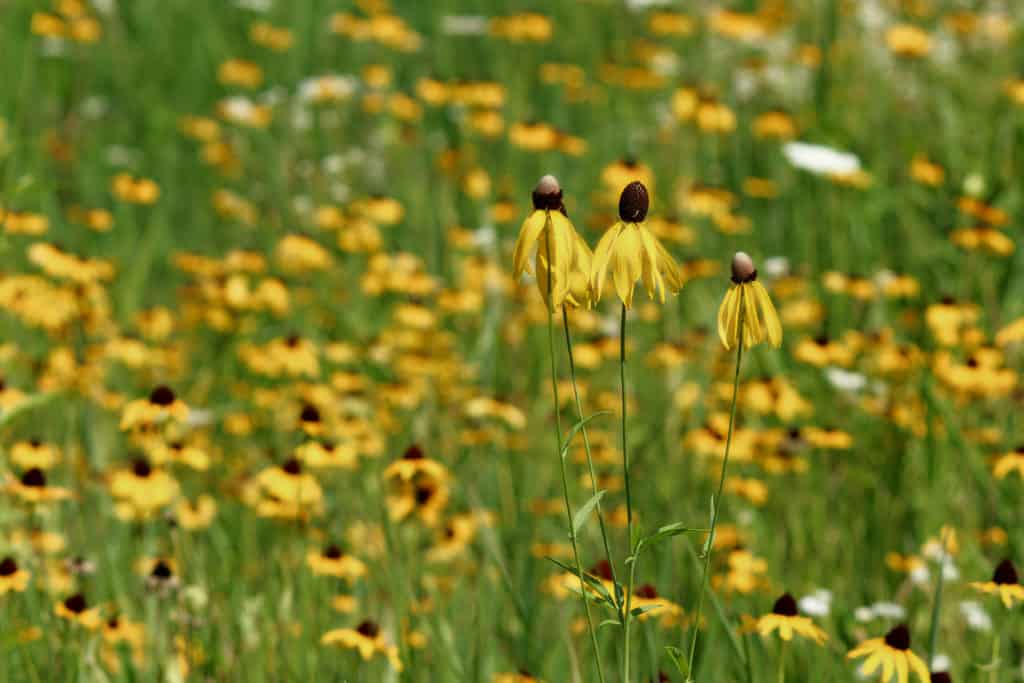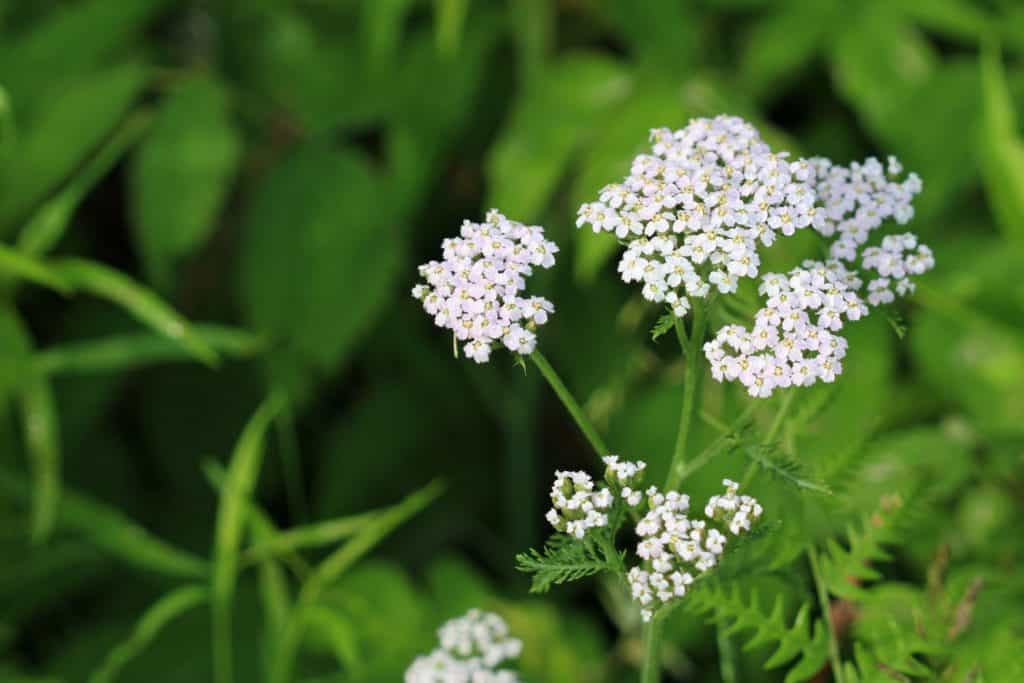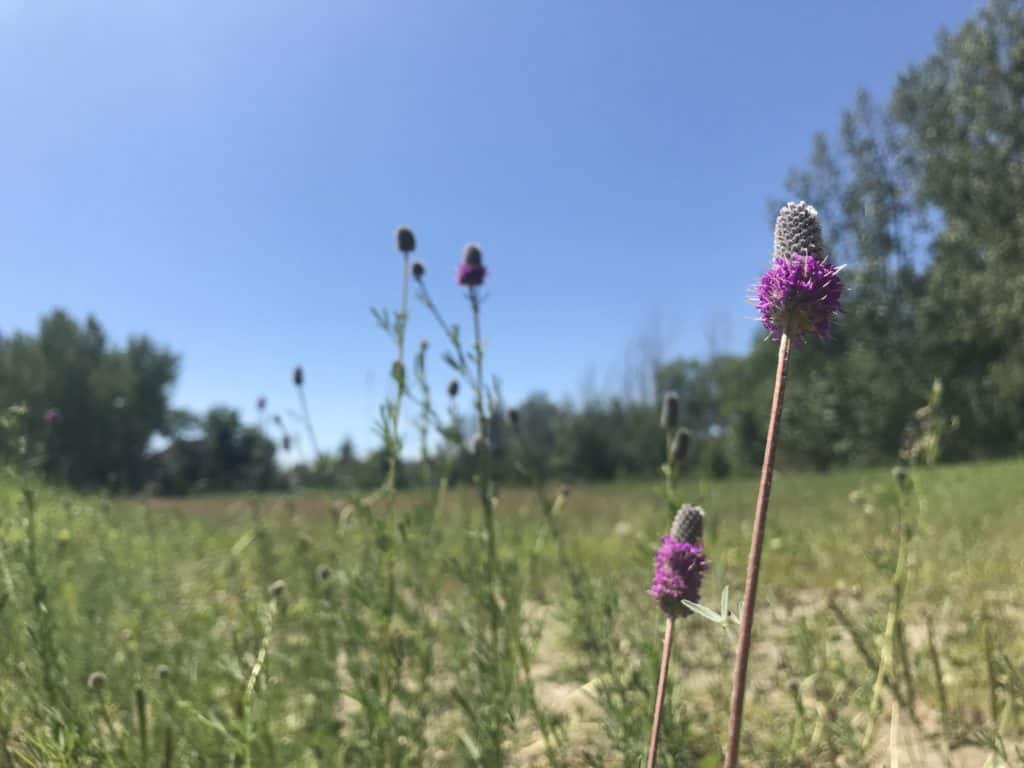
While researching which plants to include in my native flower gardens, I realized there is not a lot of information available to Albertans- specifically in prairie regions- regarding native flower gardening in the home setting.
My goal is to change that! Things I considered when suggesting the following pairings were: their value to insects, pleasing appearance, long bloom time, moisture needs, and growth habits.
These are suggestions for different native forbs (forbs= herbacious flowering plant other than a grass) that I imagine will be great together. Keep in mind I haven’t tried all of these out myself yet; hopefully over the next years I can attach photos!
For a beautiful, cohesive, intentional-looking garden rather than a weed patch that will have bylaw enforcement rapping on your door, it’s especially important to carefully select your native flower varieties.
For example, if you have a tiny front yard space, you’d be best choosing only a select few varieties that have tidy appearances and don’t spread rapidly. Packing lots of different plants in the space may result in an unkempt appearance.
However, it’s a great idea to plant in drifts or groups of 5-15 (or many more!) of the same plant, depending on the size of your garden. Not only are large drifts of the same plant more aesthetically pleasing and natural-looking, but it apparently also helps pollinators find the flowers more quickly.
Check out my progress on planting native grasses and forbs here and here.
Yarrow & Silvery Lupine
Yarrow (Achillea millefolium)

Yarrow prefers average, well drained soil, but can tolerate a variety of soils and moisture conditions. It spreads both by rhizomes and seeds. Bees and butterflies love this plant, which blooms for many months!
Yarrow will grow approximately 12-24 inches tall. It can handle sunny conditions as well as shade.
Deer don’t prefer to eat yarrow. I know, because they ate many things here last year and weren’t shy about coming right up to the house to do so…but they left my yarrow alone! Major win in my books.
I personally love yarrow with its feathery soft foliage and incredible hardiness. Yes, it spreads with abandon- but plant it where that quality is advantageous and you’ll be glad you did!
Yarrow is also purported to have medicinal properties, such as stopping bleeding. Apparently if you cut yourself with your garden knife, you can quickly chew a bit of yarrow foliage and then put it on the wound to stop the bleeding. I haven’t tried this myself yet, but I’m really curious if it’s true!
Silvery Lupine (Lupinus argenteus)
Like yarrow, silvery lupine spreads quickly. However, it spreads by seeds and not rhizomes.
Silvery lupine is in the pea family and is a nitrogen fixer.
Well loved by butterflies and many species of native bees, this is an exceptional plant to include in your native wildflower garden. It will also attract hummingbirds and other birds!
One thing to note: silvery lupine is toxic when ingested (especially the seeds). Use caution if you have small children or livestock.
Why I think they’ll grow well together
I believe that yarrow and silvery lupine will keep each other’s growth in check a bit. I also love the combination of purpley-bluish color of the lupine flowers with the white of the yarrow. The feathery, fernlike foliage of the yarrow will be nicely complemented by the palm-like lupine foliage.
Both types prefer to grow in full sun and dry, well drained soil.
Blackeyed Susan & Giant Hyssop
Blackeyed Susan (Rudbeckia hirta)
You can’t go wrong with cheerful Blackeyed Susan! Planted en masse, it makes a colorful deep yellow statement even from a distance. It’s easy to grow from seed as well. The vibrant flowers will attract many butterflies, bees, and moths.
The plants tend to flop about a bit, but it looks natural rather than messy. This plant definitely tolerates drought.
The only downside? Blackeyed Susan is a biennial, which means it only lives two years and then dies off. It is likely to reseed itself though.
Giant Hyssop (Agastache foeniculum)
Tall and stunning, Giant Hyssop also has medicinal uses and its leaves make a great tea. It will attract bees, butterflies, and hummingbirds to your yard.
The flowers are pale and a range of purples; the foliage fragrant. The deer will stay away from this plant! It’s drought tolerant once established.
Why I think they’ll grow well together
The cheerful yellow of Blackeyed Susan looks incredible paired with blue-purple Giant Hyssop spikes. Especially en masse, this will create a stunning display in your garden.
Purple Prairie Clover & Blue Flax
Purple Prairie Clover (Dalea purpurea)

I was beyond excited when I found two purple prairie clover blooms in the first year of growth after a spring seeding. The flowers are quite small, purple-pink, and thimble-shaped.
This year, there are many, many plants about to bloom. Some are already blooming; see above photo.
This plant has a deep taproot that can handle drought well. A pollinator favorite, nitrogen-fixing purple prairie clover provides nectar for many species of butterflies, bees, and other insects.
Bloom time is July to August. Plants can be fairly easily grown from seed, in my experience. Mature plants are approximately 3 feet tall with a 1-2 foot spread. (Second year plants in my garden are maybe 1.5ft tall).
The foliage is fine and delicate, and a bright shade of green.
Blue Flax (Linum lewisii)

Blue Flax also grows readily from seed AND blooms the first year (online info is conflicting about that, but I had great success with blooms the first year). I highly recommend trying these out! The tiny blue blooms are so cheerful and adorable.
More great things about blue flax: it is drought tolerant, blooms from early to midsummer, and is beloved by bees and butterflies. It can spread easily by seed but the seedlings are easy to pull (or gift to your friends and neighbors).
(Note 2022: I was under the impression that blue flax readily reseeded itself; however in our swale only very few plants have grown this second year. I’m not sure why! We do have non-native blue flax as well that was gifted from our neighbor, pictured above. That one IS a reliable perennial, but obviously the idea here is to use native plants).
Why I think they’ll grow well together
For a carefree, beautiful summer display, plant purple prairie clover intermingled with blue flax. These are arguably some of the cutest, most precious of native wildflowers.
In Conclusion
These are just a few ideas to get you thinking about which native flowers you might like to plant! I’ll add to this list as I experiment and grow more and more different wildflower varieties.
Meanwhile, check out Prairie Moon Nursery for tons of information and photos of native plants! I love browsing their site and you will, too!
I also discovered Lyndon Penner’s books, which I highly recommend! I’ve most recently finished reading “Native Plants for the Short Season Yard”; a great read!

